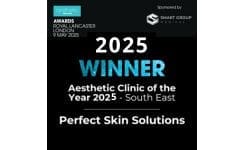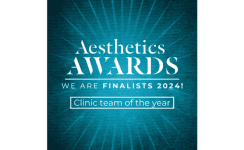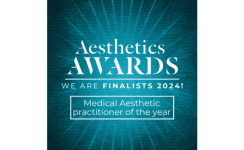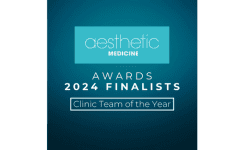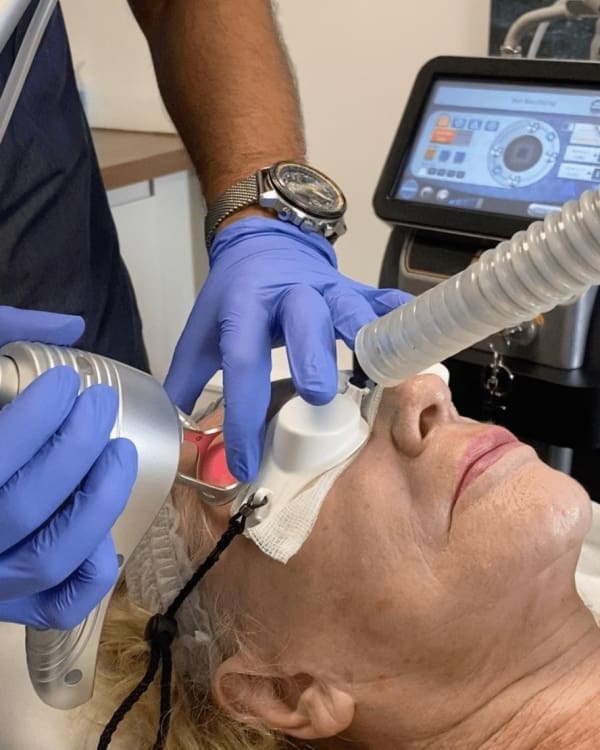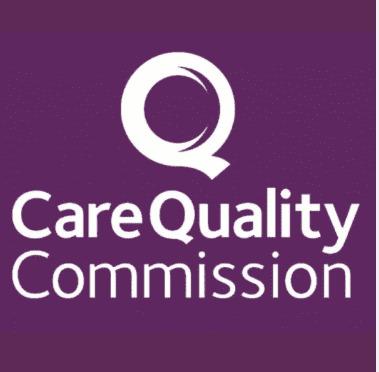Effective Treatments for Scarring Pimples and Acne Scars
Acne scarring is a common issue for many people who have experienced severe acne, such as acne vulgaris. These scars can take various forms, from atrophic acne scars like ice pick scars, boxcar scars, and rolling scars to raised scars such as hypertrophic scars and keloid scars. If you’re looking to address acne scars, this post will explore the best methods for scarring pimples treatment, helping you reduce their appearance and improve your skin’s texture.
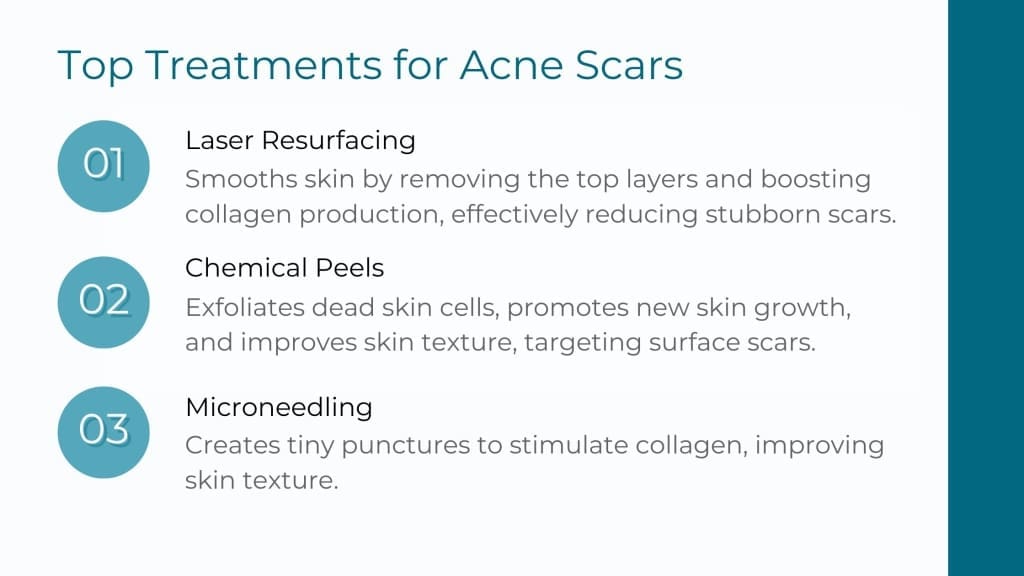
Scarring Pimples Treatment: Understanding Types of Acne Scars
Understanding the different types of acne scars is key to choosing the best acne scar treatment. There are two main categories: atrophic scars and hypertrophic scars.
- Atrophic scars: These scars are sunken and are caused by a loss of tissue during the acne healing process. They include:
- Ice pick scars: Narrow, deep pits that can resemble puncture marks.
- Boxcar scars: Round or oval depressions with steep edges, which can be shallow or deep.
- Rolling scars: Scars that cause a wave-like appearance due to uneven skin texture.
- Hypertrophic scars: These are raised scars caused by an overproduction of collagen. They often appear as thick, raised areas of scar tissue.
1. Atrophic Scars
Atrophic scars are a type of acne scar that appears as small indentations in the skin. They occur when the skin does not produce enough collagen during the healing process, resulting in a depression or pit in the skin. Atrophic scars can be further classified into three subtypes: ice pick, rolling, and boxcar scars. Ice pick scars are narrow and deep, while rolling scars are wider and shallower. Boxcar scars are similar to rolling scars but have a more defined edge.
Treating atrophic scars can be challenging, but there are several options available. Laser resurfacing, chemical peels, and microneedling are popular treatments for atrophic scars. These treatments work by stimulating collagen production, removing damaged skin cells, and promoting skin texture improvement. In some cases, fillers such as hyaluronic acid or calcium hydroxylapatite may be used to raise the depressed area and improve the appearance of the scar.
2. Hypertrophic Scars
Hypertrophic scars are a type of acne scar that appears as raised, thickened areas of skin. They occur when the skin produces too much collagen during the healing process, resulting in an overgrowth of scar tissue. Hypertrophic scars can be itchy, painful, and tender to the touch. They can also be red or pink in color, which can make them more noticeable.
Treating hypertrophic scars typically involves reducing the size and appearance of the scar tissue. Laser treatment, steroid injections, and silicone gel sheeting are common treatments for hypertrophic scars. These treatments work by reducing inflammation, breaking down scar tissue, and promoting collagen remodeling. In some cases, surgical excision may be necessary to remove the scar tissue and improve the appearance of the skin.
3. Keloid Scars
Keloid scars are a type of acne scar that appears as raised, thickened areas of skin that can be larger than the original acne lesion. They occur when the skin produces too much collagen during the healing process, resulting in an overgrowth of scar tissue. Keloid scars can be itchy, painful, and tender to the touch. They can also be red or pink in color, which can make them more noticeable.
Treating keloid scars can be challenging, but there are several options available. Laser treatment, steroid injections, and silicone gel sheeting are common treatments for keloid scars. These treatments work by reducing inflammation, breaking down scar tissue, and promoting collagen remodeling. In some cases, surgical excision may be necessary to remove the scar tissue and improve the appearance of the skin.
What Causes Acne Scarring?
Acne scarring occurs when the skin is damaged during an acne breakout. This damage can be caused by a variety of factors, including:
- Inflammation: When acne becomes inflamed, it can cause damage to the surrounding skin, leading to scarring.
- Bacteria: The bacteria that cause acne can also cause damage to the skin, leading to scarring.
- Picking or popping pimples: When you pick or pop a pimple, you can cause damage to the surrounding skin, leading to scarring.
- Genetics: Some people may be more prone to acne scarring due to their genetic makeup.
Best Treatments for Acne Scars
Treating acne scars effectively requires a tailored approach to treat acne scars, as the treatments for depressed acne scars differ from those for raised scar tissue. Here are some proven methods:
1. Laser Resurfacing
Laser resurfacing, particularly fractional laser resurfacing and fractional ablative lasers, is one of the most effective acne scar treatments. This procedure uses lasers to remove the top layer of scar tissue while encouraging collagen induction therapy in the deeper layers of the skin. It is especially useful for treating deep ice pick scars and atrophic facial acne scars, making the surrounding skin smoother and reducing the appearance of scars.
2. Chemical Peels
Chemical peels are dermatological treatments that use acid-based solutions like salicylic acid, lactic acid, or alpha hydroxy acids (AHAs) to remove dead skin and promote new skin growth. Selecting the appropriate type of chemical peel based on individual skin types is crucial for effectiveness and safety. Mild and medium peels can improve skin tone and texture, while deeper peels can significantly reduce the appearance of boxcar acne scars and rolling acne scars. However, those with darker skin tones should be cautious, as some peels may cause pigmentation changes.
3. Microneedling
Also known as skin needling, this treatment uses fine needles to create tiny punctures in the skin. This stimulates the skin’s wound healing process and boosts collagen production, making it an effective solution for atrophic acne scarring. Microneedling can also be combined with radiofrequency or platelet-rich plasma (PRP) to enhance results.
4. Soft Tissue Fillers
For sunken acne scars like boxcar scars and rolling scars, soft tissue fillers such as hyaluronic acid can help fill in the depressions, improving the appearance of the skin. These fillers give temporary results, typically lasting around 6 to 18 months, but they offer immediate improvement in skin surface smoothness.
5. Topical Treatments
Topical retinoids, like retinol and tretinoin, are commonly used to speed up cell turnover and improve the appearance of new acne scars. They also help prevent future acne breakouts, minimizing the chance of more acne lesions forming. Combining these with salicylic acid or lactic acid can further enhance the treatment.
Advanced Treatments for Severe Scarring
In cases of severe scarring, more invasive procedures may be necessary.
1. Fractional Ablative Laser
For deep ice pick scars and severe scarring, fractional ablative laser treatments are highly effective. These lasers penetrate deep into the underlying tissue, targeting the deeper scars and triggering the skin’s natural healing process to regenerate collagen and new tissue.
2. Skin Grafting
For extreme cases of atrophic acne scars, especially depressed scars, a skin graft from another part of the body can be used to fill in the scarred areas. This treatment is generally reserved for the most severe cases and is often used in combination with other procedures to ensure optimal results.
3. Surgery
Surgery is a treatment option for acne scarring that involves removing the scar tissue and improving the appearance of the skin. There are several types of surgery that can be used to treat acne scarring, including:
- Excision: This involves removing the scar tissue and closing the wound with stitches.
- Punch excision: This involves removing the scar tissue and using a skin graft to cover the area.
- Subcision: This involves using a needle to break up the scar tissue and improve the appearance of the skin.
Surgery can be an effective treatment option for acne scarring, but it can also have risks and complications. It’s essential to consult with a dermatologist or plastic surgeon to determine if surgery is the best treatment option for your acne scarring.
4. Radiofrequency and Needling
Radiofrequency and needling are non-surgical treatment options for acne scarring that involve using heat or needles to stimulate collagen production and improve the appearance of the skin. These treatments can be used to treat a variety of acne scars, including atrophic, hypertrophic, and keloid scars.
Radiofrequency treatments use heat to stimulate collagen production and improve the appearance of the skin. This can be done using a variety of devices, including lasers and radiofrequency machines.
Needling treatments use tiny needles to stimulate collagen production and improve the appearance of the skin. This can be done using a variety of devices, including microneedling pens and rollers.
Both radiofrequency and needling treatments can be effective for acne scarring, but they may require multiple sessions to achieve optimal results. It’s essential to consult with a dermatologist or skincare professional to determine if these treatments are right for you.
How to Prevent Acne Scars
While treating existing scars is essential, prevention is key to avoiding them in the first place. The best way to prevent scarring is by treating active acne effectively and avoiding behaviors that damage the skin, such as picking or squeezing pimples. Regular use of acne treatment products like salicylic acid or benzoyl peroxide can help control acne and reduce the risk of scarring.
Additionally, protecting your skin from the sun is crucial, as sun exposure can worsen the appearance of scars and slow down the healing process. For people with darker skin, post-inflammatory hyperpigmentation can be an added concern, so consistent sun protection is important.
Consult a Dermatologist for Acne Scarring Treatment
For the most effective treatment for acne scars, it’s best to seek an acne scar consultation with a dermatologist who specializes in both clinical and aesthetic dermatology. They can assess your skin tone, the type of scars you have, and your overall skin condition to recommend personalized acne scarring treatments. Options like laser treatment, chemical peels, and other advanced therapies will depend on your specific needs and the severity of your scars.
Conclusion
Dealing with acne scars can be a long and frustrating process, but with the right approach, you can significantly reduce their appearance. From laser resurfacing and chemical peels to microneedling and soft tissue fillers, modern acne scar treatments offer solutions for various scar types, including atrophic and hypertrophic scars. Whether you’re looking to remove acne scars or prevent new ones from forming, consulting a dermatologist is the first step towards smoother, clearer skin. It is crucial to consult a dermatologist to effectively treat acne scars and explore the best options for your skin type.
With consistent care and the appropriate scar treatments, your skin heals and regains its natural glow.


















